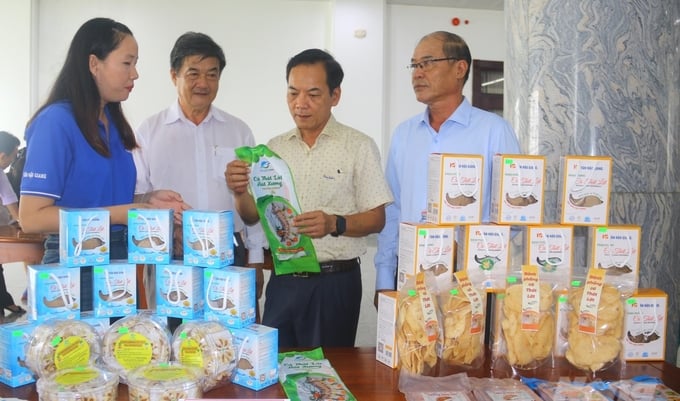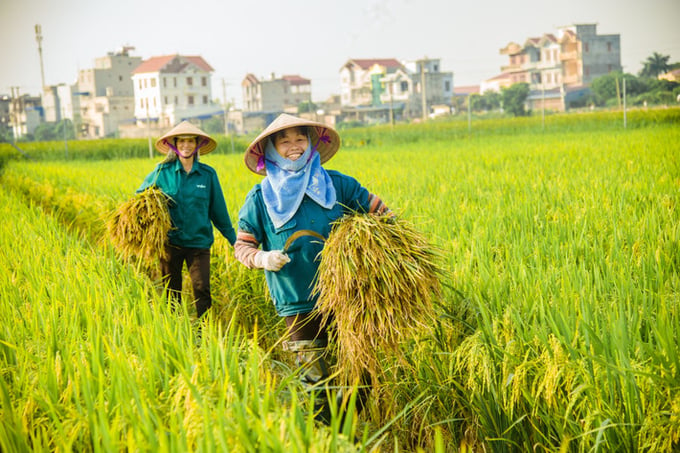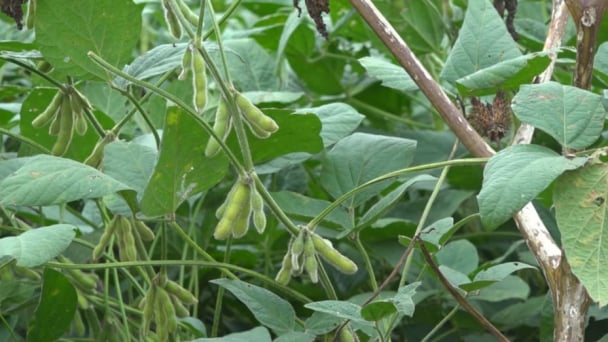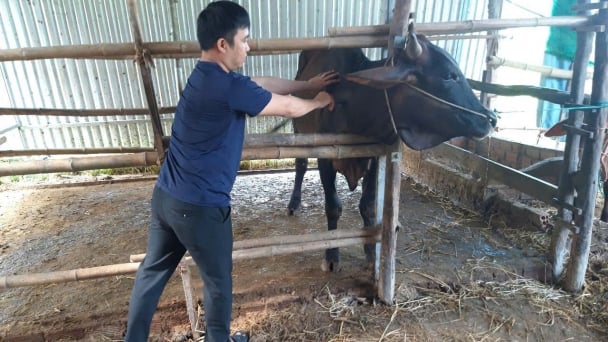April 22, 2025 | 05:06 GMT +7
April 22, 2025 | 05:06 GMT +7
Hotline: 0913.378.918
April 22, 2025 | 05:06 GMT +7
Hotline: 0913.378.918

A cooperative in Hau Giang displays products of snakehead fish. Photo: Trung Chanh.
As of December 2024, the country has 33.335 cooperatives (an increase of 4.74% compared to 2023), 152 cooperative unions (an increase of 11% compared to 2023) and 63.650 cooperative groups (a decrease of 11% compared to 2023). The number of new cooperatives established in 2024 is 2.197, achieving 73.23% of the target, averaging 183 new cooperatives per month.
The total number of cooperative members is over 5.8 million (a decrease of 0.38% compared to 2023); the number of cooperatives in the cooperative unions is 993 (an increase of 0.02% compared to 2023); the total number of cooperative group members is 944.587 (a decrease of 0.49% compared to 2023). The total number of regular employees in 2024 is 897.109 (an increase of 4.19% compared to 2023).
The average revenue of cooperatives is 147.917 USD/year (an increase of 0.42% compared to 2023); the average profit per cooperative in 2024 is 14.666 USD/year (an increase of 8.64% compared to 2023); the average income of a regular employee in a cooperative is 2.458 USD/person, the same as in 2023.
The total number of cooperative managers is estimated at nearly 127.400 people, an increase of 1.13% compared to 2023. Of these, more than 46.6% (over 59.400 people) are managers with secondary and intermediate qualifications, while nearly 31.500 (24.7%) have higher education qualifications (college or university).
Notably, cooperatives and cooperative groups have strengthened linkages, production chains, and digital transformation. Some successful agricultural cooperative models operating across all 63 provinces and cities include: Dong Tien Fisheries Cooperative, Toan Thang Cooperative (Bac Lieu); Binh Minh Organic Agriculture Cooperative (Bac Giang); Xuan Mai Integrated Agricultural Service Cooperative (Bac Ninh); Thinh An Tea Cooperative, Hao Dat Cooperative (Thai Nguyen); Binh Quy High-Tech Agriculture Cooperative (Tien Giang); Long Hiep Organic Agriculture Cooperative (Tra Vinh)…
In total, around 4.300 agricultural cooperatives handle product consumption, accounting for 24.5% of all agricultural cooperatives, compared to just 5-7% before 2015.
Many cooperatives have proactively adjusted their management, production-business models, embraced digital transformation, applied scientific and technological solutions and enhanced governance towards transparency and proactivity. Nationwide, about 2.000 agricultural cooperatives are applying high technology and digital technology.

In 2025, the country aims to have 35.000 cooperatives with 7.1 million members. Photo: Le Hoang Vu.
The National Steering Committee for Collective Economy has highlighted several ongoing challenges and shortcomings. Specifically, some specialized laws in areas such as taxation, land management, and public assets do not yet include specific provisions designed to support the collective economy sector and cooperatives, nor do they fully align with the new 2023 Cooperative Law.
Access to state support policies for cooperatives remains limited. The issuance of detailed guiding documents for the 2023 Cooperative Law has been slow, which has created a temporary legal void.
The Steering Committee further stressed that while the number of cooperatives continues to increase, it is still insufficient to meet the targets set in the 2021-2025 five-year plan. Moreover, the number of cooperative groups has continued to decline, and the overall scale of cooperative membership has slightly decreased compared to 2023. Despite some positive developments in revenue, profit, and worker income within the collective economy and cooperative sectors, these improvements are progressing at a slow pace. There is a genuine concern that cooperatives may fall behind other economic sectors in terms of competitiveness.
A significant issue is that the majority of cooperatives and cooperative groups are still small, with limited capital and narrow operational scope. This restricts their competitiveness and limits the benefits they can offer to their members. Furthermore, internal linkages within cooperatives remain weak, and issues like outstanding debts and the misappropriation of funds are yet to be fully addressed. Additionally, joint ventures and collaborations between cooperatives and other economic organizations are still not common practice.
The capabilities and qualifications of cooperative managers, although improving, still lag behind those in other economic sectors. Currently, only 24.7% of cooperative managers have completed college or university education, which is a relatively low proportion compared to management levels in other sectors. Moreover, some cooperatives have yet to fully comply with legal operating principles, and many cooperative members continue to exhibit a dependency mentality, relying on state assistance rather than actively participating in or contributing to the cooperatives’ success.
In response to these challenges, the Steering Committee has reiterated its goal for 2025: to develop a dynamic and efficient collective economy and cooperative sector that contributes to creating jobs, increasing income, advancing rural development, and ensuring social welfare. This goal aims to strengthen the role of cooperatives as an integral part of Vietnam's national economy.
The plan is also to attract more farmers into cooperatives and encourage greater involvement from organizations and businesses in either partnering with or supporting cooperatives.
By 2025, the national targets are to have approximately 134.000 cooperative groups with 1.8 million members, 35.000 cooperatives with 7.1 million members, 210 cooperative unions comprising 1.100 member cooperatives, and more than 3.000 cooperatives applying high-tech solutions to agricultural production and product consumption. Additionally, about 35% of agricultural cooperatives are expected to be involved in value chain linkages with businesses.
Translated by Phuong Linh

(VAN) A soybean processing plant in Lancaster County, South Carolina is expected to close this spring, officials confirmed Monday.

(VAN) The Central Veterinary Diagnosis Center (Department of Livestock Production and Animal Health) has proposed tightening the mechanisms for monitoring and ensuring transparency in the testing information provided by private laboratories.

(VAN) Not only does vaccination protect livestock against dangerous diseases, but it also brings sustainable economic benefits to farmers.

(VAN) Since the beginning of the year, Dong Nai has recorded 8 rabies outbreaks, resulting in 2 deaths due to unvaccinated dogs being let loose on the streets.

(VAN) Green finance needs to undergo global reform to ensure capital flows to the right places, at the right time, and supports a just green transition.

(VAN) On the afternoon of April 17, Prime Minister Pham Minh Chinh chaired the closing ceremony of the P4G Vietnam Summit 2025, with the theme 'Sustainable and People-Centered Green Transformation.'

(VAN) Vietnam and Singapore are poised to sign the Paris Agreement and collaborate on implementing large-scale renewable energy projects that are mutually beneficial.